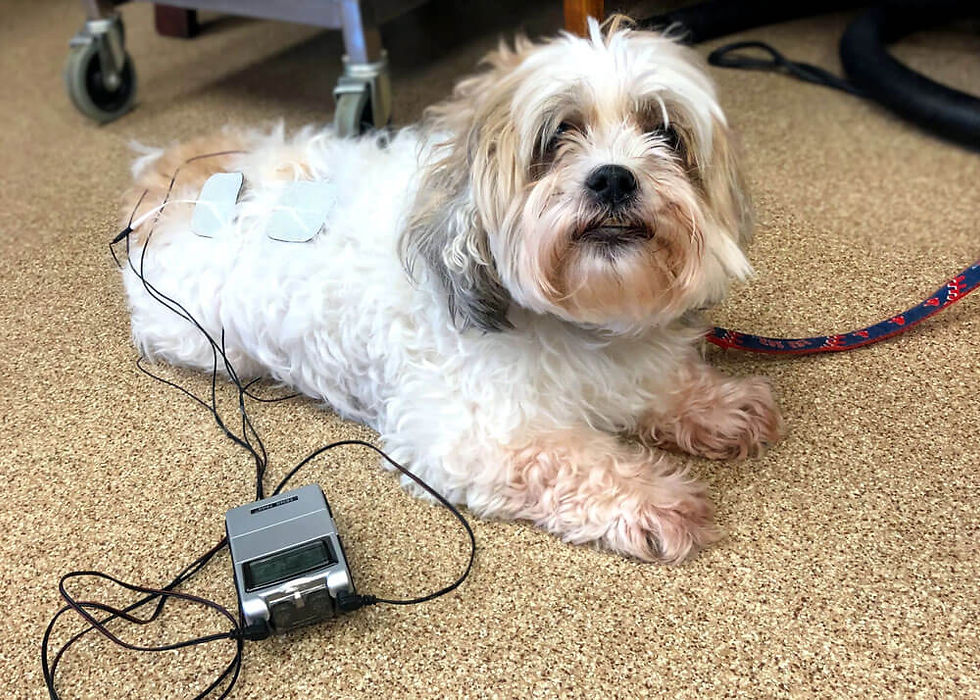Harnessing the Power of TENS Machines for Stroke Recovery: Benefits and Applications
- Team MIA

- Feb 25, 2023
- 3 min read
Updated: Feb 7, 2024

Stroke, a leading cause of long-term disability worldwide, often leaves survivors grappling with impaired motor function and diminished quality of life. While traditional rehabilitation methods play a crucial role in stroke recovery, emerging technologies like Transcutaneous Electrical Nerve Stimulation (TENS) machines offer promising adjunctive therapies. In this exploration, we delve into the application of TENS machines in stroke rehabilitation, uncovering their benefits, mechanisms of action, and potential impact on recovery outcomes.
Understanding Stroke and Rehabilitation:
Stroke, characterized by sudden loss of blood flow to the brain, can result in a spectrum of impairments ranging from paralysis to cognitive deficits. Rehabilitation post-stroke aims to facilitate neuroplasticity, the brain's ability to rewire and adapt, thereby enhancing functional recovery. Traditional methods such as physical therapy, occupational therapy, and speech therapy form the cornerstone of stroke rehabilitation, but complementary approaches like TENS therapy are gaining recognition for their adjunctive benefits.
What is a TENS Machine?
A TENS machine is a portable, non-invasive device that delivers low-voltage electrical impulses to specific areas of the body via electrodes placed on the skin. Originally developed to alleviate pain, TENS machines have evolved to address a diverse array of conditions, including stroke rehabilitation. By modulating nerve activity and promoting muscle contraction, TENS therapy offers a novel avenue for enhancing motor recovery post-stroke.
Benefits of TENS Therapy in Stroke Recovery:
Pain Management: Many stroke survivors experience chronic pain, spasticity, and musculoskeletal discomfort, which can impede rehabilitation progress. TENS therapy offers effective pain relief by disrupting pain signals and stimulating the release of endorphins, the body's natural painkillers. By alleviating pain, TENS machines enable stroke survivors to engage more fully in rehabilitative exercises, promoting functional gains.
Muscle Re-Education: Following a stroke, muscle weakness and disuse can lead to muscle atrophy and loss of motor control. TENS/EMS therapy aids in muscle re-education by inducing muscle contractions through electrical stimulation. By targeting specific muscle groups, TENS/EMS machines facilitate neuromuscular activation, helping stroke survivors regain strength, coordination, and mobility.
Improved Range of Motion: Contractures, or permanent shortening of muscles and tendons, commonly occur post-stroke due to spasticity and prolonged immobility. TENS therapy can mitigate contractures by promoting muscle relaxation and stretching. By applying TENS to affected muscles, therapists can enhance range of motion and joint flexibility, facilitating functional movements essential for daily activities.
Neuroplasticity Enhancement: Neuroplasticity, the brain's ability to reorganize and form new neural connections, underpins stroke recovery. TENS therapy may enhance neuroplasticity by modulating cortical excitability and promoting synaptic plasticity. Studies suggest that electrical stimulation can facilitate motor cortex activation, potentially accelerating motor recovery and functional restoration post-stroke.
Sensory Stimulation: Sensory deficits, including loss of proprioception and tactile sensation, are common sequelae of stroke. TENS therapy can provide sensory stimulation to impaired limbs, enhancing sensory feedback and proprioceptive awareness. By integrating sensory input with motor training, TENS machines optimize motor learning and sensorimotor integration, facilitating more efficient movement patterns.
Integrating TENS therapy into stroke rehabilitation protocols requires careful consideration of electrode placement, stimulation parameters, and patient tolerance. Therapists typically tailor TENS settings to individual patient needs, adjusting intensity, frequency, and duration to optimize therapeutic outcomes. Electrodes may be positioned over muscles affected by weakness or spasticity, along with corresponding nerve pathways implicated in motor control.
Clinical Evidence and Future Directions: While the efficacy of TENS therapy in stroke rehabilitation is supported by empirical evidence, further research is warranted to elucidate optimal treatment protocols and long-term outcomes. Randomized controlled trials investigating the effectiveness of TENS machines in conjunction with standard rehabilitation protocols are needed to validate their role as adjunctive therapies. Moreover, advancements in wearable technology and neuroimaging techniques hold promise for personalized TENS interventions tailored to individual stroke profiles.
How can tVNS using a TENS Machine aid in Stroke Recovery?
Non-invasive, transcutaneous VNS (tVNS) via auricular vagus nerve stimulation in the ear (taVNS) and cervical vagus nerve stimulation in the neck (tcVNS) have been shown to activate similar vagal nerve projections in the central nervous system to invasive VNS.
A number of pre-clinical studies indicate that tVNS delivered in acute middle cerebral artery occlusion reduces infarct size through anti-inflammatory effects, reduced excitotoxicity and increased blood-brain barrier integrity. Longer term effects of tVNS in stroke that may mediate neuroplasticity include microglial polarisation, angiogenesis and neurogenesis.
Pilot clinical trials of taVNS indicate that taVNS paired with rehabilitation may improve upper limb motor and sensory function in patients with chronic stroke.
Suggested TENS Machine Settings for tVNS:
Mode: Normal
Pulse Width: 200us
Pulse Rate: 15-30us/step.
Duration: 15 min/day for 2 weeks.
Transcutaneous Electrical Nerve Stimulation (TENS) machines represent a promising modality for enhancing stroke recovery by addressing pain, muscle dysfunction, and neuroplasticity. As part of a comprehensive rehabilitation approach, TENS therapy offers tangible benefits in pain management, muscle re-education, and functional restoration post-stroke. By harnessing the power of electrical stimulation, clinicians can optimize outcomes and improve quality of life for stroke survivors worldwide.
Reference
https://www.ncbi.nlm.nih.gov/pmc/articles/PMC6449801/




Comments